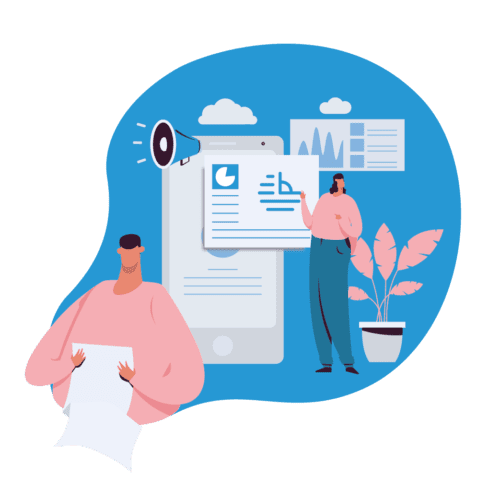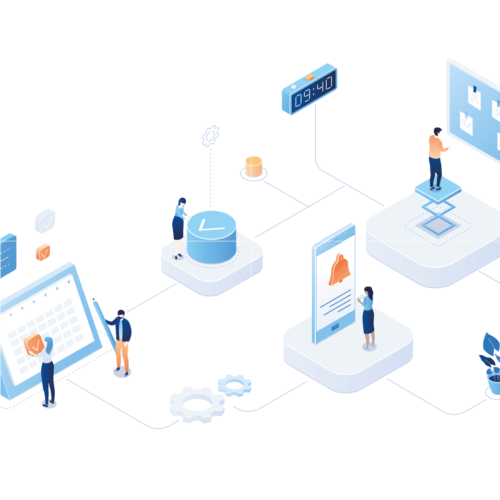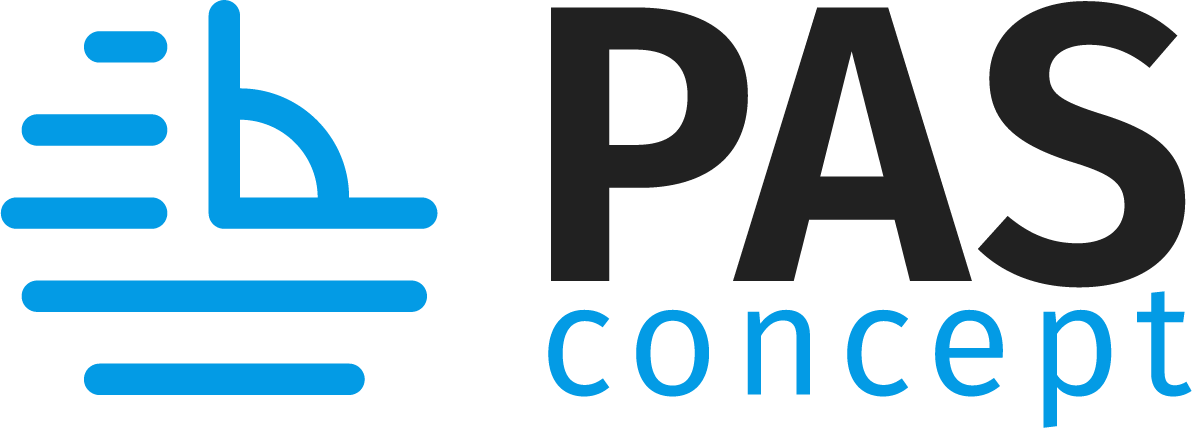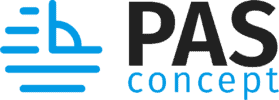
Purposes of ERP Systems
What is an ERP system? Objectives and Characteristics
For an Architecture and Engineering company, the management of their internal processes is necessary. For this reason, the computing technology becomes an essential key to code, optimize and integrate all of the computing foundation of the company. By fusing information, management and technology it is easier to energize the workload, which is why it is important picking the right technological systems for the company.
The Enterprise Resource Planning systems (ERPs) are essential applications to manage computing processes in an integrative way.
Knowing what an ERP is, the different types, characteristics and benefits will facilitate its use. Visualizing PASconcept as an ERP that optimizes enterprise management in an efficient way, and will bring back valid information necessary for Architecture and Engineering companies.
Enterprise Resource Planning System
Concept
An ERP system is a computing application that manages all the company’s business processes in an integrative way. It works as a sole program with access to a centralized database. Its purpose is to organize, code and standardize the data and processes; transforming the transactional data into useful information, grouping this data so it can be analyzed. This information is translated into better decision-making.
Patricio Ramirez Correa reflects an interesting insight of the system in the text “The success of ERP systems”. He states that this is an extensive commercial solution of packed software, composed of various configurable modules that firmly integrate in a sole system the core entrepreneurial activities- finances, human resources, manufacturing, supply chain, client management- through the automation of information fluidity, and the use of shared databases.
Modularity, quickness, directive control and adopting in the information fluidity are part of the characteristics that PASconcept possesses as an ERP tool. This application offers an integral service of project management oriented for Architecture and Engineering companies.

Types of ERP Systems
Classified as local (On premise) or in the Cloud (SaaS), both are different ERPs.
The first one requires maintenance in your own servers. It needs a high initial investment and its implementation takes time, teamwork and staff. The company itself administrates the data offering better security and confidentiality. However, you can only access the system through a computer or device that has the software installed.
The second one occurs in a cloud server (cloud computing). The service consists of a monthly subscription based on the number of hired users. Even if you do not have control over the data, this modality is more and more secure by the day because of the automatic security copies and the encryption of information.
Other Typologies
ERP systems categorizes in generic, pre-configured, individualized and tailored, and usually design in this manner.
Companies of different sectors and characteristics employ Generic systems. The second one adapts to the sector of the company based on its necessities, its size and the sector they work in. The latter ones are used based on the characteristics of a specific company.
PASconcept is an ERP cloud computing that is pre-configured and verticalized.
The system adjusts to the company’s idiosyncrasy that chooses it, adapting the modules based on their necessities. These modules are previously configured, with standardized and automated parameters, which undoubtedly helps with data introduction and the later management of the information.
And the best part, everything in PASconcept is adjustable to cover our clients’ needs.
Characteristics of ERPs
ERPs focus on business processes. One of the most interesting characteristics of ERPs is the capacity to use open technologies. Thus, ERP systems offer an adaptive capacity and a more global use based on the technology that the company has.
Its standardization is another of its characteristics and benefits. The design of these systems is generically and adjustable to any organization. As a result, ERPs offer an opening to different sectors.
The fact that ERPs contain various configurable modules that integrate entrepreneurial core activities is another essential characteristic. Accordingly, the integration of these activities is advantageous to the company because it guarantees more control of the information and a more effective customer service.

Benefits of Using ERPs
Using an integral system like an ERP counts as an added value for any company, and even better for architecture and engineering companies.
By implementing this type of system, you now have a powerful communicative channel that intertwines all the departments and counts with the informative tools to be integrated.
Consequently, better business strategies are set in place in order to achieve better customer service, saving money in the process.
Dimensions of ERPs
According to the text “The benefits of implementing ERP systems”,
The benefits of ERPs are the following:
Operational dimension: Costs reduction, reduction of the operational cycle, productivity and quality improvement and better customer service.
Managerial dimension: Better resource management, improvement in decision and pacification, improvement in performance.
Strategic dimension: Supports the growth of the business, supports business alliances, construction of innovation in the business and formation of leadership in costs, product differentiation and help with networking with external clients and suppliers.
Technological information infrastructure dimension: The flexibility in the current businesses and future changes, cost reduction of the information technologies and increment of the capacity of technological information infrastructure.
Organizational dimension: Supports changes in organization, facilitates learning within the company, generates empowerment by knowing every actor its purpose inside the operational cycle and finally, it helps building a group vision for the organization.
Benefits of Using PASconcet as an ERP
PAsconcept is a modular, standardized and automated concept which facilitates in a modern way the synchronization of information, also the documentation link in a virtual platform, secure and with global access.
With this powerful tool you can also save time at work. It allows planning, organizing and controlling it, besides adopting new business strategies based on the statistical data that the system provides.
Other Benefits
With its use you can:
PASconcept, Modern ERP, Personalized and Useful
Intelligence is the capacity to adapt to change. Therefore, Architectural and Engineering companies need PASconcept as a management tool. With this modern, personalized and automated application, you took a critical step towards entrepreneurial success. For this reason, using PASconcept is not an option, but a necessity.






